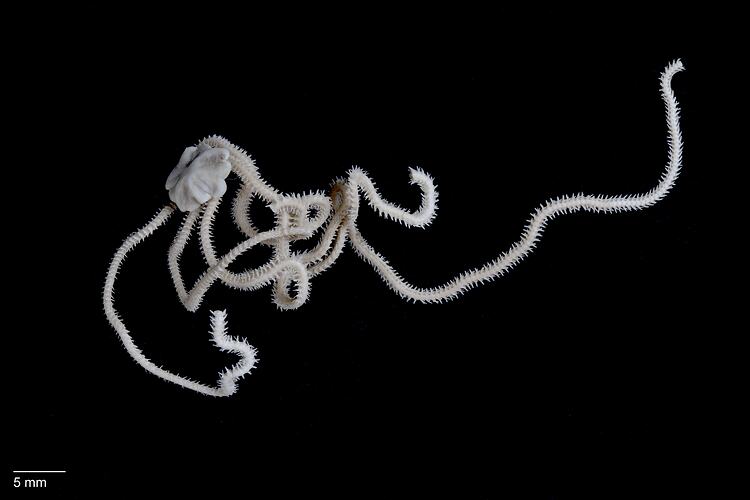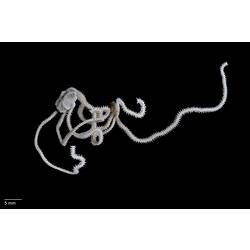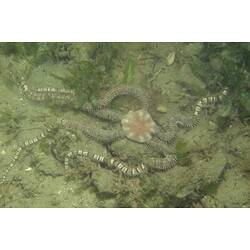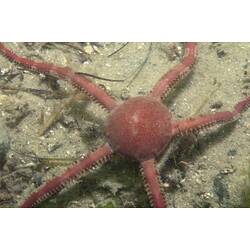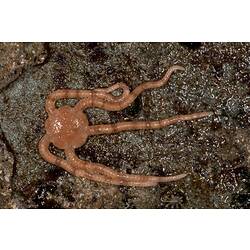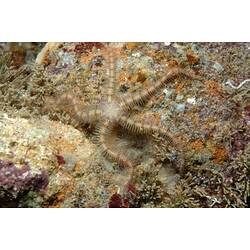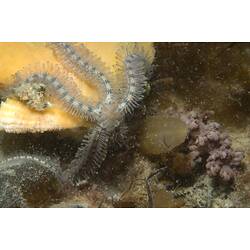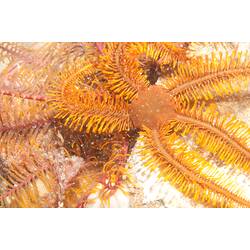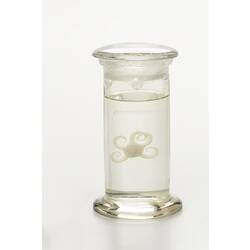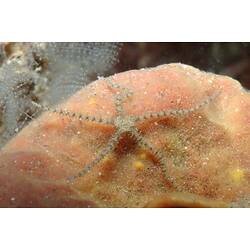General Description
Unlike sea stars, brittle stars are characterised by long flexible arms that move with ball-and-socket joints. The arms are clearly distinct from the central disk. Though pentaradial symmetry is common, some ophiuroids have six or seven arms. Colour patterns vary. Most species are well-camouflaged, though tropical species tend to show vivid or contrasting colours.
Biology
Although most brittle stars are herbivores or detrital feeders, some are known to be carnivorous. Like all echinoderms, brittle stars have a calcite skeleton called a test. Unlike in true sea stars (asteroidea), brittle stars have flexible arms and do not use tube feet in locomotion . Rather, filter-feeding brittle stars use their tube feet to move small particles of food into the jaws. Ophiuroids have five jaws surrounding their mouth, which is used for both ingestion and egestion. They use bursae for respiration and excretion. Bursae are small cilia-lined sacs through which water flows. The central disc contains the digestive glands and the madreporite, the opening of the water vascular system. Brittle stars have evolved some unusual adaptations to deal with predators. When startled, some species are able to emit bioluminescent light. Many brittle stars are able to move very quickly or even self-amputate arms as a decoy. Amphiura elandiformis has the ability to cast off the dorsal disc surface as a distraction to predators, including the stomach and gonads. These body parts are then able to be regenerated. Reproduction in brittle stars occurs in two main ways. Some species release eggs and sperm into the water, which then go through a larval stage before settling and developing into adults. Most species however brood their young internally, and at least one species is known to be truly viviparous. Some are also known to be hermaphroditic, and potentially self-fertilise.
Distribution
Worldwide.
Habitat
Marine intertidal rock pools to abyssal depths.
More Information
-
Animal Type
-
Animal SubType
-
Fast Fact
Though brittle stars are common all around the world, a 'Brittle Star City' has been located atop an Antarctic seamount covered with hundreds of thousands of brittle stars!
-
Brief Id
Brittle stars generally have five long, whip-like arms surrounding a central body disk.
-
Maximum Size
45 cm
-
Habitats
-
Diet
Omnivore
-
Diet Categories
Organic matter, Diatoms, Crustaceans, Algae, Molluscs
-
Endemicity
-
Commercial
No
-
Depths
Shore (0-1 m), Shallow (1-30 m), Deep ( > 30 m)
-
Water Column Locations
On or near seafloor
-
Taxon Name
-
Common Name
Brittle Star
-
Kingdom
-
Phylum
-
Subphylum
-
Class
-
Superorder
-
Order
